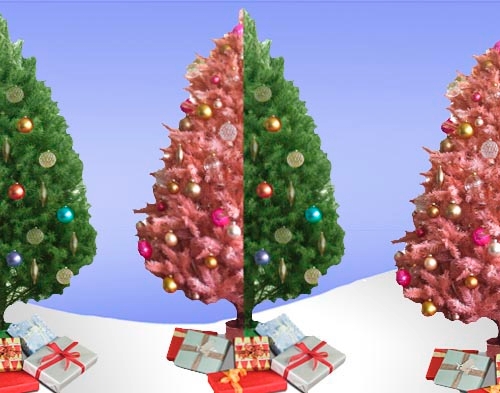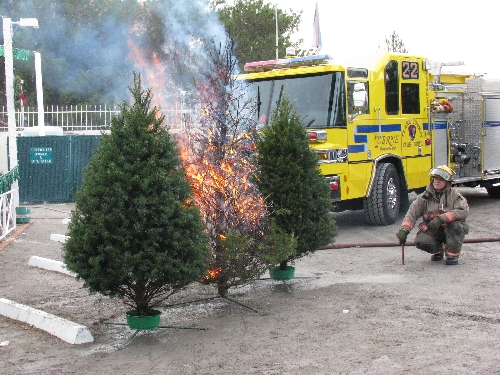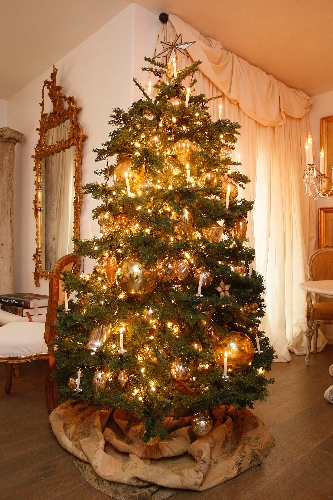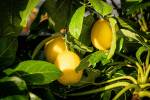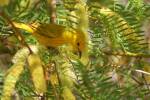Convenience, safety, environment all issues when choosing Christmas tree
If the things you need under the tree this Christmas include the tree itself, you have two options. Americans purchased 28.2 million farm-grown Christmas trees in 2009, according to the National Christmas Tree Association, 11.7 million artificial ones.
Each has its own benefits.
With a fake tree, you buy convenience. There is only one car ride -- and it's not particularly challenging or hellish since artificial trees come in a box. There are no messy needles to clean up at home or in the car. And nothing needs disposing of until you do.
"The good ones last the rest of your life," says Kate Jones, designer at Ralph Jones Display, which sells only artificial trees. "And they're so much less of a hassle in every way."
Convenience, however, is only one of several factors to consider. According to the National Christmas Tree Association, a fake tree is used an average of 7.5 years before being tossed.
"The earth's gonna be here a lot longer than you and me," says association spokesman Rick Dungey. "So it doesn't matter how long you use your fake plastic tree; future generations are going to have landfills full of every one that was ever manufactured."
Furthermore, artificial trees don't just sit in landfills doing nothing. They leech lead into the ground, according to Annalisa Helm, education specialist for the Springs Preserve and chairwoman for the Southern Nevada Christmas Tree Recycling Committee.
"The lead makes the needles more malleable during manufacturing," Helm explains, pointing out that California requires lead warning labels on its artificial Christmas trees.
The argument that fake trees save real ones from being chopped down -- often printed on artificial tree boxes made of trees, by the way -- is technically true but deceptive. Lot trees are farmed and replanted, like corn, not chopped down wild from forests.
"And for every tree that gets cut," says Helm, "two or three are planted."
From Dec. 26 until Jan. 15, the Springs Preserve will operate 21 recycling sites across the valley. (See springspreserve.com for a full list). Real trees left at these sites will be mulched. (If you don't want to deal with a second hellish trip with the tree strapped to your car, 1-800-GOT-JUNK will come to your house and drop the discarded tree at a recycling site for $30, which includes vacuuming the needles in your house.)
Even if you just leave your real tree out for Republic Services, it will at least decompose in the landfill. (By the way, this is where your flocked real tree will end up -- even if you drop it off for the Springs Preserve -- since the chemicals in fake snow render flocked trees unrecyclable.)
Basically, if the environment is your only consideration, natural trees are your only choice. They can be purchased freshly cut from one of dozens of home stores, nurseries and temporary tree lots across the valley. And if seeing a beautiful tree die gets you down, many of the same nurseries also sell uncut potted pines. Their pots are biodegradable, so they slip easily into the hole you dig to replant it after Christmas.
"This is the best option from the tree recycling committee's standpoint," Helm says. "But, obviously, for a lot of people who live in condos or apartments, it's not possible."
There is another big factor to consider in tree type choice, too: fire safety. And, according to the Las Vegas Fire Department, artificial trees win.
"I can't remember a fire with an artificial Christmas tree," said fire department spokesman Tim Szymanski. "Of course, if you've got electric lights, you're gonna have to be careful with anything."
Artificial trees win on a technicality, however.
"Natural trees are fine if people take care of them like they should," Szymanski says, "but almost nobody does."
Placing a cut tree in water at home is not enough, Szymanski says, if it has been out of water for more than 10 minutes. In that case, it will have formed a watertight sap seal -- the plant equivalent of a blood clot.
"And no matter how much water you put in the base," Szymanski says, "it'll never pick it up, and the tree will dry out."
Szymanski recommends cutting another quarter inch off the base of your tree once you get it home, then immediately placing the tree in a pot of water. (At least one gallon of new water must be added a day, depending on room humidity, and the pot must never run dry.)
Following last year's Christmas season, Szymanski lugged a tree maintained according to these guidelines to the fire department's training center.
"We put direct flames on it and it wouldn't light," Szymanski says. "Then we took a neighbor's tree that he never watered, and it was gone in 30 seconds."
Contact reporter Corey Levitan at clevitan@ reviewjournal.com or 702-383-0456.



